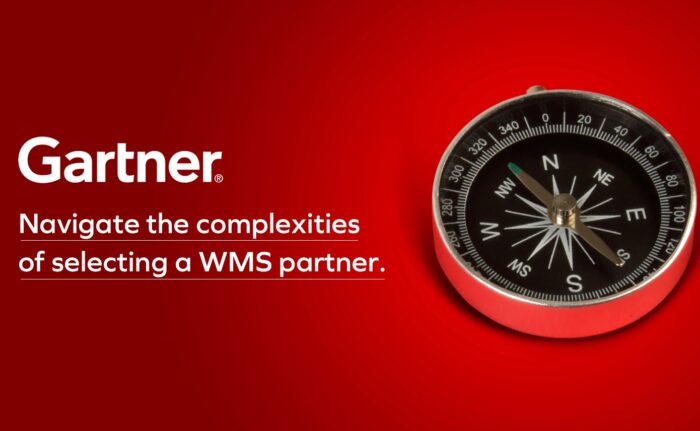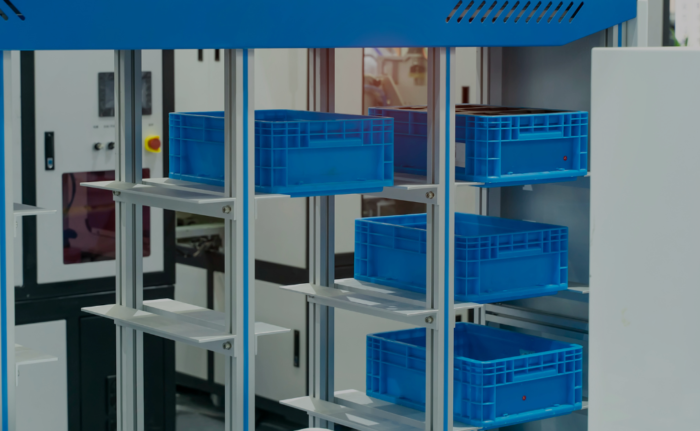
In today’s fast-moving supply chains, agility isn’t a bonus—it’s a necessity. That’s where a cloud-based warehouse management system (WMS) steps in. It’s the tool that unchains warehouse operations from hardware, enabling seamless access, real-time control, and scalable performance. To demonstrate how cloud-based warehouse management systems can benefit your operation, this article will cover:
- What is a cloud-based warehouse management system?
- Why is a cloud-based warehouse management system important?
- What are common challenges in warehouse management that a cloud WMS addresses?
- What are the benefits of using a cloud WMS?
- What are the key features to look for in a cloud WMS?
- Why should I use a cloud WMS instead of an ERP?
- What is an example of a cloud-based warehouse management system?
What is a Cloud-based Warehouse Management System?
A cloud-based warehouse management system (or a cloud WMS) delivers core infrastructure—servers, storage, databases, and the software itself—over the internet, hosted securely off-premises. Users access it through a web browser or app, eliminating the need for on-site hardware and IT overhead. It is often deployed as Software-as-a-Service (SaaS) and supports flexible scaling and subscription-based pricing.
Why is a Cloud-based Warehouse Management System Important?
A cloud-based warehouse management system delivers business resilience and growth readiness. Core benefits include:
- Anywhere, anytime access: Users log in from any device, location, or hour, powering teams with up-to-the-minute data.
- Cost predictability: A subscription model reduces upfront capital and provides more secure, scalable cost structuring.
- Enterprise-grade flexibility: Software and infrastructure upgrades are delivered remotely and smoothly, eliminating downtime.
- Scalability and security: Cloud solutions expand with your business and provide built-in resilience and cybersecurity that surpass on-premise systems.
- Faster innovation and integration: Continuous updates and easier connections with ERP, TMS, and other tools keep operations agile and future-ready.
What are Common Challenges in Warehouse Management that a Cloud WMS Addresses?
A cloud-based WMS helps tackle today’s toughest warehouse challenges including:
Warehouse Management Challenge #1: Limited Visibility
Cloud platforms provide real-time, centralized data access across locations, improving accuracy and decision-making.
Warehouse Management Challenge #2: High Upfront and Ongoing Costs
Subscription-based pricing eliminates heavy capital investments in servers and IT, offering more predictable costs.
Warehouse Management Challenge #3: Scalability Constraints
Cloud solutions scale quickly as operations grow—whether that’s adding users, new facilities, or expanded functionality.
Warehouse Management Challenge #4: Integration Hurdles
Modern Cloud WMS platforms integrate seamlessly with ERP, TMS, LMS, and automation tools for end-to-end efficiency.
Warehouse Management Challenge #5: System Downtime and Maintenance
With updates delivered automatically in the cloud, businesses avoid disruptions and reduce IT burdens.
Warehouse Management Challenge #6: Security Concerns
Cloud vendors typically provide enterprise-grade cybersecurity, backups, and disaster recovery beyond what most companies can maintain on-site.
What are the Benefits of Using a Cloud WMS?
Every operation will have a different reason why a cloud WMS is the right solution for them. The benefits most commonly cited include:
Cloud WMS Benefit #1: Lower upfront and ongoing costs
No need for servers or separate maintenance teams, so your budget stays razor-focused.
Cloud WMS Benefit #2: Robust security
Cloud services incorporate enterprise-level protection tailored to warehouse-sensitive data environments.
Cloud WMS Benefit #3: Rapid deployment and updates
From day one, your team gets access. Plus, updates and new features roll out quickly and safely.
Cloud WMS Benefit #4: Future-ready for automation
Cloud architecture empowers quick integration with AI, IoT, and analytics—future-proofing your warehouse. They also make it easier to connect new devices—like barcode scanners, RFID, and robotics—so warehouses can adapt quickly to automation trends without major disruptions.
Cloud WMS Benefit #5: End-to-End Operational Visibility & Reporting
The right cloud WMS provides live insights on everything—from inventory levels to fulfillment exceptions—paired with rich historical visibility that supports smarter, data-driven decision-making
Cloud WMS Benefit #6: Seamless Scalability
The cloud-native, service-based architecture grows with you—supporting automation, robotics, and multi-site expansion without compromising performance or stability.
What are the Key Features to Look For in a Cloud WMS?
When evaluating a cloud WMS, look for:
Cloud WMS Feature #1: Seamless integration
The most powerful systems go beyond a standalone WMS—integrating WMS, WCS, YMS, labor, routing, and proof-of-delivery into one unified platform for real-time orchestration across all supply chain nodes.
Cloud WMS Feature #2: Secure multi-tenant or private-cloud options
Cloud WMS options, like Made4net’s WarehouseExpert™, offer a private cloud for isolated data handling and controlled upgrades
Cloud WMS Feature #3: Built for IoT and AI
A reliable system that scales supports sensor data, smart workflows, and machine learning use cases. From conveyors and robotics to enterprise systems, your cloud WMS must integrate deeply with MHE and automation tools to drive seamless interaction between systems and on-the-floor execution.
Cloud WMS Feature #4: Advanced core functionality
Look for cartonization to optimize packaging, task interleaving to reduce travel and dead time, cycle counting for continuous stock accuracy, and labor management to boost productivity and worker engagement.
Cloud WMS Feature #5: Workflow Adaptability
The right system lets users tailor dashboards, screens, and workflows. Not every operation is the same—and neither should the software be.
It’s also important to note the distinction between cloud vs. SaaS WMS models. A cloud WMS may be hosted and managed off-site, while SaaS adds the advantage of a subscription model with continuous updates and maintenance handled by the provider. Understanding this difference ensures you select the right deployment to match your business strategy.
Why Should I Use a Cloud WMS Instead of an ERP?
A cloud-based WMS is purpose-built precision for your warehouse. Here’s why it’s worth choosing over an ERP warehouse module:
- Specialized Warehouse Functionality: An ERP handles broad business functions—like finance, HR, and supply chain—but its warehouse capabilities are often basic. A cloud WMS delivers depth, not just breadth, with sophisticated tools built for core warehouse tasks: cartonization, task interleaving, labor management, cycle counting, and more. These advanced features go far beyond what ERP modules can typically provide
- Workflow Agility for Real-Time Agility: Today’s market demands speed and flexibility in warehouse operations. A modern WMS enables dynamic priority handling, customizable data attributes, and drag-and-drop workflows—changes that ERP-based modules often struggle to accommodate.
- Complement, Not Replace: For organizations with complex or large-scale operations, the best approach is a hybrid model: use your ERP as the backbone—handling financials, purchasing, and general business processes—while empowering your warehouse teams with a cloud WMS that excels at execution and adaptability.
While an ERP module may initially seem convenient, a cloud-based WMS is the tool that actually manages, optimizes, and future-proofs your warehouse operations.
What is an Example of a Cloud-based Warehouse Management System?
Made4net’s flagship solution, WarehouseExpert™, is a configurable, cloud-based WMS that accelerates deployment, delivers end-to-end integration—including labor, automation, yard, and routing—and powers real-time visibility and exceptional scalability. It’s built on Microsoft technology with rules-based workflows, making it adapt to your business, not vice versa.
Curious how a cloud-based WMS can transform your operations? See how Pearlgreen upgraded to Made4net’s cloud WMS and streamlined fulfillment, improved accuracy, and shipped orders faster than ever. Ready to discover what it could do for you? Book a demo with one of our experts today.


